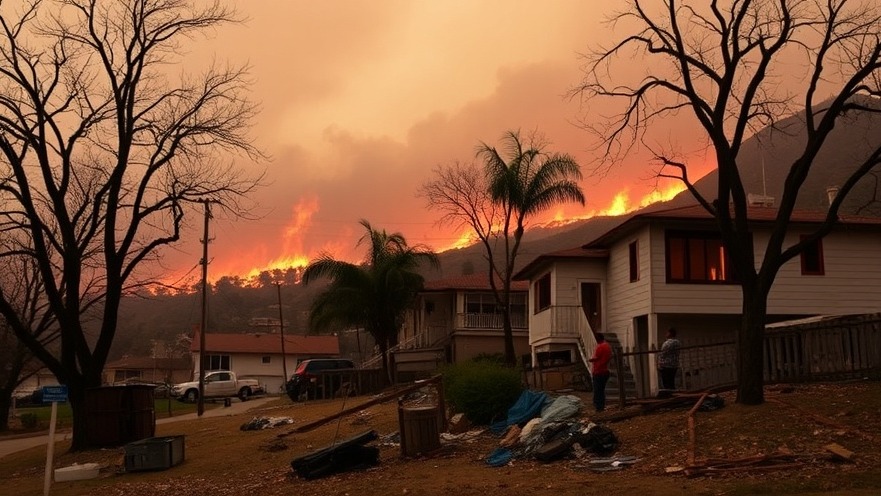
Understanding the Fire Impact on Renters' Rights
The fires that ravaged Pacific Palisades and Altadena in January have left many renters in a precarious situation. Not only were residences destroyed, but countless businesses also went up in flames, severing the livelihoods of those dependent on employment in the affected areas. Gardeners, nannies, and housekeepers—once gainfully employed—now face the daunting prospect of uncertainty as they struggle to keep up with rent payments.
What Protections Are Available for Renters?
In response to this crisis, Los Angeles County has instituted eviction protections for renters who have lost income due to the fires. If you find yourself in this unfortunate position, it’s crucial to understand your rights. Renters are shielded from evictions due to nonpayment of rent if they experienced direct financial harm as a result of the fires and meet specific criteria.
To qualify, your household income must be at or below 150% of the area median income (approximately $147,000 for a family of four), and you need to have lost at least 10% of your average monthly earnings due to the disaster. Additionally, you must have resided in your unit prior to January 7 and be taking concerted actions, like seeking employment or financial aid, to stabilize your situation.
Important Steps for Tenants
It’s imperative to notify your landlord in writing about your financial difficulties within seven days after the rent due date. If you missed February's rent, inform your landlord by March 4 that the fires impacted your ability to pay. Despite these protections, landlords still have the ability to file eviction cases in court. However, these laws empower tenants to contest such cases, serving as a robust defense for those affected.
Governor's Executive Order: Extended Protections
Further bolstering these measures, Governor Gavin Newsom recently extended protections specifically designed for firestorm survivors, encompassing limitations on evictions and price gouging. This means tenants are particularly safeguarded from landlords attempting to exploit the situation by increasing rents unjustly. The executive order also prioritizes fire survivors on waiting lists for state-funded housing, helping to navigate their reentry into stable living conditions.
Renter Responsibilities and Resources
If you find yourself facing eviction proceedings, responding in a timely manner is critical. Ignoring eviction notices can have dire consequences, potentially leading to court-approved evictions. It’s also essential to remember that while you may secure relief in the short term, you are still responsible for repaying any owed rent. Resources such as Stay Housed LA are available to help navigate these protections and ensure your rights are upheld.
The Bigger Picture: Recovery and Rebuilding
The devastation of these fires highlights the ongoing challenge of housing affordability in California, already a concern before the disaster. As recovery efforts swing into action, both support for affected renters and long-term housing solutions will be crucial for stabilizing the region's future. The collaboration between state officials and local councils is instrumental in moving towards a more resilient housing market, prioritizing community needs above profit margins.
Your Role in the Recovery
Understanding these protections and taking proactive steps to advocate for your rights is vital in times of crisis. It’s a collective responsibility to support one another and ensure that anyone facing housing instability due to the recent fires can access the help they need to emerge from this challenging period.
 Add Row
Add Row  Add
Add 




Write A Comment